Please click here if the video below doesn’t show.
Author: admin
Application open for Nadia trip on May 21-22!
As you should know by now, Nadia will keep visiting Ishinomaki every week. We are now opening the application period for our May 21 and 22 trip! Details and application form available here! Deadline for application is May 17th!
NADIA in the press!
ISHINOMAKI, Japan (AFP) – It oozes and reeks and sometimes it shimmers in oily rainbow colours. Millions of tonnes of putrid mud now fill every nook and cranny of Japan’s tsunami disaster zone.
Volunteers who have spent weekends shovelling it out of survivors’ half-wrecked homes have developed an intimate relationship with the muck that soils their overalls, gloves and workboots.
“It looks like layered chocolate cake, but it smells like a mix of saltwater and oil,” said Masato Arima, 35, a Tokyo project manager with a financial services firm, wearing a yellow hardhat and industrial facemask.
Joji Hiratsuka, another volunteer working in the devastated port town of Ishinomaki with aid group Nadia, has a different take on the stuff.
“It’s like rancid Jell-O. It’s black. You can’t describe the smell — oil, dead fish, everything. There’s petroleum from cars, boats and oil tanks. It’s not organic. It’s like the ocean, but in a bad way.”
Ishinomaki is littered with dramatic evidence of the March 11 quake and the monster wave it spawned that erased entire neighbourhoods here and left almost 25,000 people dead or missing along the shattered Pacific coast.
Cars now stick out at odd angles from a graveyard, watched over silently by stone Buddhas. Fishing boats lie scattered amid broken houses. And a Statue of Liberty figure towers oddly over a debris-strewn river island.
But while bulldozers and cranes will eventually remove the large-scale wreckage of Japan’s epic catastrophe, clearing the mud from thousands of homes is a job that must be done by hand, one scoop at a time.
“Someone has to do it,” said Christine Lavoie-Gagnon, whose volunteer group Nadia (a name that means “Hope”) took more than 100 people by bus to the town in the just-ended “Golden Week” of public holidays.
“People here have had the shock of their lives, something that only happens once every 1,000 years,” she said. “They’re left with their sorrow and fatigue — and lots of mud in their houses.
“Money is good, but they also need hands. Three of us came in the beginning, and now there are lots of us. We have people from Asia, Europe and the Americas. Hands don’t have nationalities.
“We come back so people don’t feel alone with their mud. We do whatever they ask us to do.”
The gritty labour has made the volunteers appreciate their day jobs — many of them are traders, brokers and staff at major global financial institutions. Yet most of them have kept coming back for more.
“The insides of these houses look like they went through a mixer,” said Hiratsuka, 49, a Canadian derivatives trader and ice hockey player dubbed “the human bulldozer” by his team-mates.
“We come and help people clean out their houses. They may not even be able to live there again, but it gives them breathing space. An elderly couple can’t dig through a tonne of dirt. They need help.”
There are better and worse days.
“One day we found about 20 kilograms (45 pounds) of chicken buried in the mud. It had been there for about three weeks, it was fermented and slimy,” Hiratsuka said, clearly not relishing the memory.
The more rewarding finds are families’ mementos and keepsakes — photographs, religious icons, urns with relatives’ ashes — that volunteers sometimes find in the mud, clean up and return to the families.
The job is not just about muscle power, but also emotional support.
Mother-of-two Yukako Ishikawa was so moved by the group’s help in her half-destroyed childhood home that she likened the motley crew of workers in outdoor wear and hazmat suits to a flock of deities.
“When I was alone here, I felt so much fear,” said Ishikawa, 36, who survived the tsunami when she took her young children and elderly parents to a nearby elementary school building with only minutes to spare.
Her family shuddered for days in the darkness and cold, waiting for help. Desperate for food, Ishikawa waded back through waist-deep water to salvage drink bottles, cans and plastic-sealed food from the flooded kitchen.
As the muddy waters receded, she returned to the two-storey house, the detritus of their former lives now a jumbled and soggy mess, wondering if and when she could start to reclaim her life.
“I was alone here in a house full of mud,” she said, as volunteers around her filled wheelbarrows and sandbags with black earth, cleaned hand-carved window frames and restored a small Japanese garden.
“They helped me through the hard time. Now I feel I can move forward.”
http://news.yahoo.com/s/afp/20110509/wl_asia_afp/japandisasteraccidentnuclearaidmud
NADIA was on TV !
Story of Nadia
Everything started with one mail from Christine who had just returned from the Tohoku region on her media report job immediately after earthquake. She sent a mail to several friends, and talked about the disastrous scene of the stricken area.
“It’s not productive to be in grief in front of television. The people in refuge centers are suffering from shortage of necessary goods, and their house is heavily damaged, they need immediate help. It’s also important to raise donation fund staying in Tokyo, but they need our actual hands to give them support. Let’s go to support as soon as possible, making sure to bring our food and drink, and secure our accommodation.”
Soon two friends raised their hands up, and departed Tokyo on 24/March. We started our activity at Tagajo-city, which is 15 kilometers away from Sendai. It’s only 12 days after earthquake, and there were still aftershock continuously, infrastructure like gas wasn’t back yet even big city like Sendai. Not a hotel was open regularly. The only place which accepted us is a hotel so called “Love Hotel”, and because of that hotel our activity became possible.
Three women in a Love-Hotel room, our stay was far more comfortable than we expected. In a room we had everything we needed except for hot shower. There was a microwave oven, water boiler, massage chair, a king sized bed, fridge, air-conditioner, playstation, karaoke, movie projector, even romantic room lighting! Although we hardly used any of those fancy facility, considering the fact that many houses and refuge centers were enduring black-out, we appreciate “Hotel Bonita” so much.
As we continue our activity at Tagajo city, cleaning their houses, moving out their furniture, helping reception in city hall, checking relief supply, we understood what is needed at stricken area.
When weekend came, three more friends joined us with car-full relief supply, and continued volunteer activity at Tagajo. We realized, more volunteer numbers we have, more efficient our activity became.
After work, back to Bonita hotel, we talked about future volunteer plan through night, with foods and wines we brought from Tokyo.
We went back to Tokyo once to prepare for next bigger scaled plan, and soon we came back to Miyagi. And since then, we visit Miyagi every weekend.
As we continue our activity at Tagajo city, we realized there were many more heavily damaged area, and people there need desperately our help. We set our activity point at Ishinomaki city, where houses were still remained untouched 3 weeks after tsunami.
At first we brought relief supply and our own gears from Tokyo, but as they started recovering from damage, we saw shops and restaurants were restarting their business. When we made sure they had enough supply, we decided to get relief goods and necessary gears from local shops, and try to buy stuff from them, this is because we aim to encourage their local business.
We order our lunch at local shop and they deliver them to us. And also, instead of camping, we enjoy staying at local Ryokan, which is still not perfectly in operation, but restarted their business trying to recover as soon as possible. On top of that, enjoying their open-air hot spring after full day work is totally priceless!!
By this way, we believe that Nadia can also support local business and employment, and it will be an investment for future development.
Everything started from one mail which was sent from the person eye witnessed the scene.
If you think you are helpless in front of natural disaster, join us once, and tell your friends what you saw.
You can change the world…
For GW
The participation entry during Golden Week is closed.
We are waiting for your next participation!
Golden week with Nadia
In Japan, instead of Easter holiday, we are in the middle of holiday season, called “Golden Week”, which started from 29th/April.
Japanese are well known as hard workers at office, and for us, GW is the time to relax and recharge our energy. Some spends time with family, some goes overseas, some goes in a mountain to enjoy fresh early summer air.
Here is a story of people who decided to spend their holiday with Naida, with people at Ishinomaki. Our trip schedule was rather hard, spending night in a bus after hardworking week.
28/April(Thu)
23:00 Shinjuku
Most of us worked until evening, went home, took quick shower, grabbed boots and helmet and masks, and hurried to the meeting point. We were a group of multi-nationality, but working in Japan, we are used to be punctual, all gathered on time!
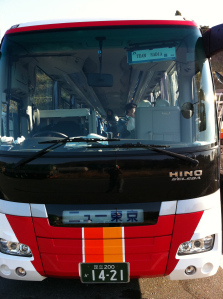
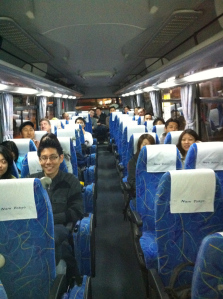
Team-Nadia, here we go!
29/April(Fri)
8:30 Ishinomaki
Again, we arrived at Ishinomaki on time, unload our baggages, and changed to working out fit. A bit nervous and shocked to see the reality. Some lost his words, some tried to hide their upset.
After briefing, each group went to houses where they were assigned. Each group were well mixed with female/male, veterans/un-experienced, JPN speakers/ENG speakers. 50 days after Tsunami, many houses still remained untouched. Most of us couldn’t sleep well in a bus, but no one complained seeing how people enduring under this situation.
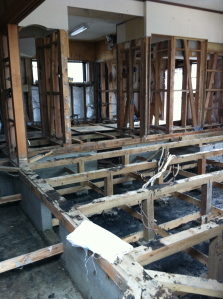
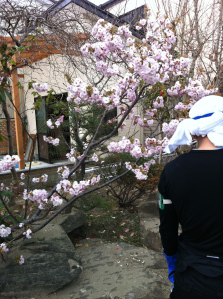
Sakura survived tsunami and welcomed us at their garden.
15:00~15:30 Finish work
Some group completed cleaning, and some promised to come back next day, depending on house condition.
When we met house owner in the morning, they were a little shy so as we were, but at the end of the day, all of us became like family, promised to keep helping as long as they needed, and promised to visit them when they really returned to their life in the future.
17:00 Matsushima
Matsushima is a group of islands near Ishinomaki. There are some 260 tiny islands (shima) covered in pines (matsu) – hence the name – and is ranked as one of the Three most beautiful views of japan .
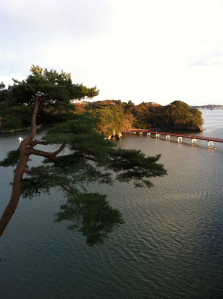
Despite the proximity of Matsushima to the Tsunami, the area was protected by the islands and suffered little damage. They were damaged by earthquakes, but tried to be recovered before GW, and they just reopened their ryokan, we were the first guests after earthquakes!
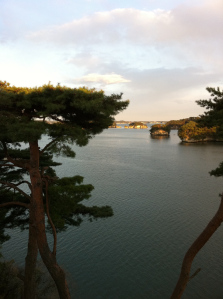
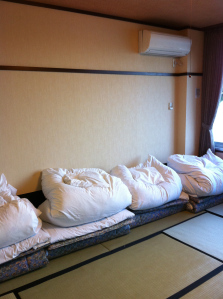
Open air hot spring the best view in Japan on my back…
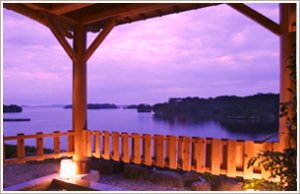
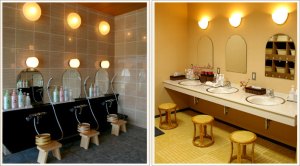
30/April(Sat)
7:30 Departure to Ishinomaki
8:30-15:00
Some continued work of previous day, some were assigned to new house. On 2nd day, no one needed to be told what to do, we all worked proactively, taking extra caution to avoid injury. There were broken glasses and nails and spikes everywhere.
One thing I noticed living in a metropolitan city like Tokyo where we often don’t know who’s living our next door is, here in Ishinomaki, we exchange greeting everyone, everyone show our sincere appreciation for their commitment both in words and in attitude.
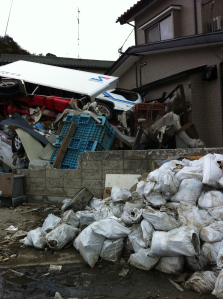
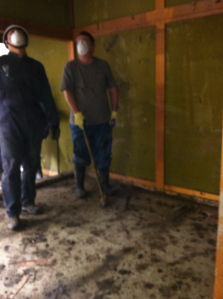
1/May(Sun)
Some of us enjoyed after work beer too much the night before, I saw many were taking aspirin at breakfast table..
One more work before going back to Tokyo.
And as an important mission during GW, we delivered 1200 pairs of brand new shoes to Ishinomaki and Watari-cho. A generous company let us use a truck for free and volunteers delivered them driving for 30 hours going up and down.
12:00 Finish work
13:00 Departure to Tokyo
In exchange of our crew, 17 Nadia crew arrived from Tokyo, and 15 more coming next day. They took over our mission, and we left Ishinomaki.
Despite the fact that we had very tough days doing physical work, we are somehow refreshed, recharged our energy.
Having a break a few times on our way back to Tokyo, I bought a famous Miyagi prefc. sweets made with green beans.
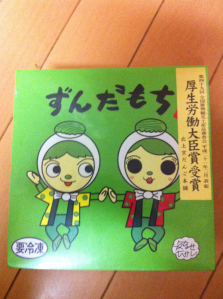
20:00 Arrived at Shinjuku
72 hours ago, we were total strangers to each other, but after spending time together at Ishinomaki, we all became comrades. We hugged and promised to see each other at Ishinomaki soon.
This is how our GW became literally Golden….
We’ll be there for you, whatever the weather is…
22/April(fri)
15:00 : Departure for Miyagi.
According to weather forecast, we’ll expect some rain during weekend, not cheerful condition for house cleaning. But we still have hundreds of houses to clean. Team-Nadia, c’est parti!
19:30 : Arrived at Akiu-onsen
Tonight lodge, Iwanuma-ya. Famous onsen made me relaxed after 4h30m drive. And we found great soba-restaurant in front of ryokan. The owner prepared us a fresh made soba with tempura. And offered various dishes and rice for free, this place is definitely to come back!
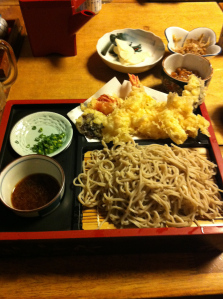
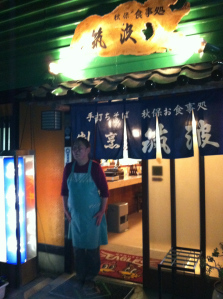
We went to bed early for next day’s activity…
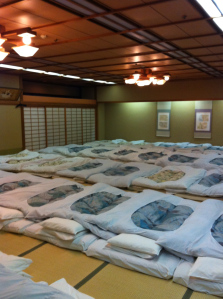
23/April(Sat)
07:00 : Departure hotel
09:00 : Arrived at Ishinomaki Minato elementary school
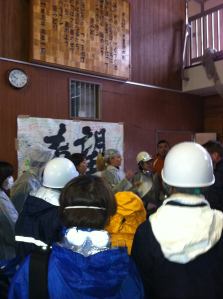
After briefing with all 47 crew, we are divided into several group, each group went to houses which were hit by Tsunami. Our team went a house close to Minato school. the weather condition wasn’t so good, but our motivation was very high, eye witnessing the power of natural disaster… All we want is that they can go back to their house and re-start their life as soon as possible. To move out a rotten piano took us lots of physical energy, but very glad to know owner still has a beautiful grand piano at other place so that one day she can enjoy playing it. We had a lunch break at Minato school and kept working in the afternoon until 16:00. We couldn’t finished all the work, it remained a store house to be cleaned, but we promised that we would come back as soon as possible.( And we came back next day!)
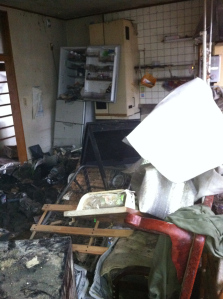
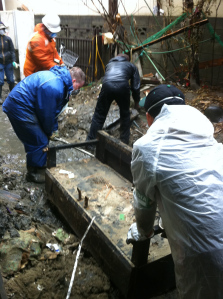
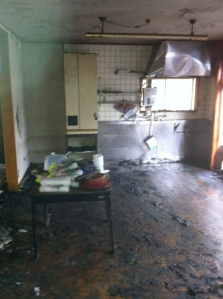
Her neighbor kindly let us wash our hands and boots, since they had a water well, we never appreciated water so much..

19:00 : Back to Akiu-onsen
There’s nothing better than onsen after physical work for whole day …
20:00 : Dinner time!
Get some energy for next day..
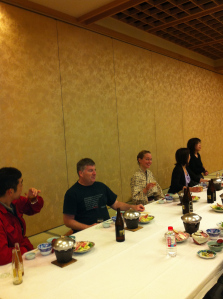
Positive energy come from good food and good sleep.
23/April(sun) Easter day
Another full day work before going back to Tokyo
Yesterday’s rain still remained on a road, water came up until knee high.. A hundred meter walk took us 10minutes. But it was a clear sunny day. Tohoku spring day really cheers us up.
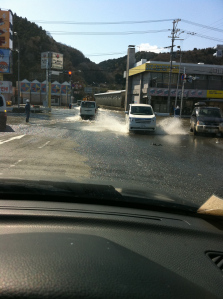
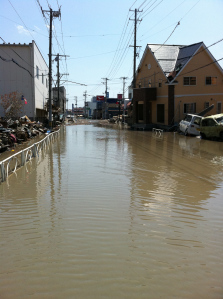
Today is Easter day, it’ christian holiday and family gather at home and have a feast all together, but seeing a manu at Minato elementary school shelter on this day, I felt the needs of immediate help.
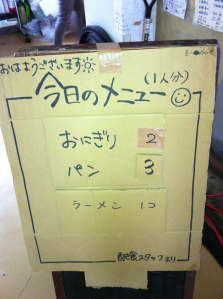
15:00 : finish the work, and going back to Tokyo
On the way back to Tokyo, we stopped at Nasukohgen to have a little break, and there we saw a beautiful rainbow… We believed this was a good sign.
When we arrived at home after 6 hours drive, I was exhausted, but somehow I was full of positive energy. And totally motivated for coming week.
I’ll be off for Miyagi-ken during golden week vacations, can’t wait to lift more wet tatamis….
Essential gear for your next Nadia outing
You might be a volunteer veteran with in depth knowledge of the intricacies of recovery work. Then you might not need to read the following. If you are not and consider joining a Nadia trip for the first time, there is a need to keep in mind some basic principles of safety and the list of self-protection equipments that could help reduce the risks!
1) Volunteer insurance is mandatory for everyone who joins NADIA field works. Instructions on how to apply are here. You can also apply for you and your group at your closest Ward Office.
2) Waterproof boots. At least to the ankle but higher the better. Best to havesteel plate in the sole to avoid possible problems with nail piercing through the sole (we had one such accident already),
3) Good facial masks (construction type mask). The ones with a little metal bar that you can pinch around your nose. Heavy duty is better since the air is dusty and may contain some asbestos particles. Expect to burn thru 4 or 5 over a weekend,
4) Goggles for eye protection. A lot of crap gets splashed around and would be nasty getting that in the eye. The air is extremely dusty as well so simple sunglasses won’t do the trick,
5) Head gear, preferably a hard construction type helmet,
6) Extra-Large and strong rubber gloves that you can fit thin construction gloves underneath for added protection and seal the wrist. You can easily go through 2 to 3 pairs over the weekend,
7) Extra strong cotton construction outfit. You can wear leggings or light sportswear underneath. Alternatively one of these Edano san type workman cotton outfit,
8) Fatigues or light plastic covering to go over your top and pants or both (breathable stuff is better). Cheap transparent raincoats can do the trick.
9) A Waist-bag instead of a back-pack, for better maneuver. You can keep in it your ID, money, medication, etc. in a fashionable “Ziploc” as well as an army knife, a mirror, hand cream, tiger balm (for your mask in case you discover a treasure of rotten fish), extra masks and a bottle of water.
10) 1st aid kit for the group (band aids, stitch-like tape, gauze, reg. tape, antibiotic cream, scissors, pain killers, immodium, shippu (sore muscles patches), eye drops for washing,
11) Your most beautiful pink pyjama, grand piano, or both for the night(s) in a nearby accomodation,
Since the environment in Ishinomaki is still unstable in many ways, and because you are going to handle dangerous pieces of debris, there is a high risk to get injured or to cause injury to others. ALWAYS be in alert and extremely CAREFUL when you are on the field.
On top of these self protection items, you will have to handle some tools to work efficiently. Many of these are provided by NADIA in Ishinomaki. We do not need to bring any of these with us from Tokyo.
1) A robust shovel. One per person is mandatory,
2) A few claws (“pied de biche” in French) and crowbar (“barre a mine” in French) to help move stuck items or open up wooden parts. One for 2 or 3 people seems enough,
3) A wheelbarrow (“brouette” in French) to carry debris to the nearby disposal location. One per group of 5 people is enough,
4) Many industrial grade garbage bags. We are talking about the fiber re-enforce type able to contain 20 or 30 kgs or dirt, not the household type. Depending on the type of work, one person might need an average of 100 to 200 such bags per day.
The tale of a first day as a volunteer in Ishinomaki…
April 15th, Tokyo
5:15… Akihabara station. Half asleep I meet my friends organizing the trip. We will be trying to help a bit for 2 days in Ishinomaki, Miyagi. We split the helmets between cars, hand over shovels and wheelbarrows and head North, overthere where Nuclear Powerplants and giant waves live on TV.
9:20… nice conversation in the car, too much water, we have a toilet break at the Asaka Service area in the vicinity of Koriyama, the closest point to the Fukushima reactors. My Geiger counter indicates a worrying 1.88 micro Sievert/hr on the parking lot. One of our friends is a bit nervous, it is down to 0.35 inside the building, hardly an issue.
12:00… our GPS shows a peaceful blue area to the right of the screen… the name 石巻 (Ishinomaki) shows up, we’ll be there in a few minutes. The landscape around us is mostly normal. It is hard to tell that a disaster hit the area.
12:05… a few hundreds meters further… we turn right and suddenly enter a different world. Beirut in the 80s… a war zones reveals itself to our shocked eyes and leaves us speechless. On the other side of the bridge a blue boat sits between houses, some buildings lie on their side between huge piles of debris and lines of workers wearing helmets walk along the sides of the streets to some unknown destination. Few people unrelated to the rescue effort are to be seen. We drive slow.
12:10… we finally reach the school ground where work is going to be distributed by the local volunteers. 2 cars are lying in the swimming pool but that sounds almost normal. We are close to the river beds but still 500m away from the shore… we cannot imagine the situation on the sea front. A quick check of the Geiger counter confirms our belief, the level is down to 0.1 micro Sievert/hr, same as Tokyo. We dress, wear our industrial masks, bullet proof safety glasses and start working in the school ground per the indication of our charismatic leader.
15.00… we finish cleaning up the drain system of the school and head for assignment #2. 3 volunteers having arrived from Nagoya after a 14 hours night bus ride decide to join forces with us. We walk through the village once more. Same feeling of desolation, I don’t have the strength to think about the consequences in terms of human lives. A large truck is parked in the garden of a house on the way, resting on a concrete wall, still lifted 1 meter above ground. We will be helping the owners of a large house by the river. Adjacent to the house is a public pavilion used for events. It looks almost normal until you see the cracked concrete base and collapsed flooring. Access is prevented by a strange mix of debris brought from the river just 30m away. We will be clearing the access and removing debris from a storage area that cranes can’t get to.
16:30… we are already 30 mins late but cannot seem to be able to stop working… there is so much that remains to be done. We know our friends are waiting and must start to be worried. We end up leaving a bit later after a warm exchange with the house owners. Going back to our accommodation in Sendai takes 2 hours. We will try to regain some strengths tonight before another day of physical labour.
We are exhausted, a bit depressed by the extend of the work that is left to do, but somehow happy to have contributed a tiny little bit.
